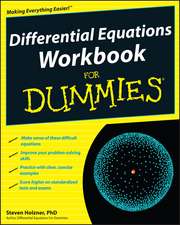An Introduction to Fronts in Random Media: Surveys and Tutorials in the Applied Mathematical Sciences, cartea 5
Autor Jack Xinen Limba Engleză Paperback – 13 iul 2009
Preț: 347.80 lei
Nou
Puncte Express: 522
Preț estimativ în valută:
66.56€ • 69.23$ • 54.95£
66.56€ • 69.23$ • 54.95£
Carte tipărită la comandă
Livrare economică 14-28 aprilie
Preluare comenzi: 021 569.72.76
Specificații
ISBN-13: 9780387876825
ISBN-10: 0387876820
Pagini: 159
Ilustrații: X, 162 p.
Dimensiuni: 155 x 235 x 8 mm
Greutate: 0.25 kg
Ediția:2009
Editura: Springer
Colecția Springer
Seria Surveys and Tutorials in the Applied Mathematical Sciences
Locul publicării:New York, NY, United States
ISBN-10: 0387876820
Pagini: 159
Ilustrații: X, 162 p.
Dimensiuni: 155 x 235 x 8 mm
Greutate: 0.25 kg
Ediția:2009
Editura: Springer
Colecția Springer
Seria Surveys and Tutorials in the Applied Mathematical Sciences
Locul publicării:New York, NY, United States
Public țintă
ResearchCuprins
Fronts in Homogeneous Media.- Fronts in Periodic Media.- Fronts in Random Burgers Equations.- Fronts and Stochastic Homogenization of Hamilton#x2013;Jacobi Equations.- KPP Fronts in Random Media.
Textul de pe ultima copertă
This book gives a user friendly tutorial to Fronts in Random Media, an interdisciplinary research topic, to senior undergraduates and graduate students in the mathematical sciences, physical sciences and engineering.
Fronts or interface motion occur in a wide range of scientific areas where the physical and chemical laws are expressed in terms of differential equations. Heterogeneities are always present in natural environments: fluid convection in combustion, porous structures, noise effects in material manufacturing to name a few.
Stochastic models hence become natural due to the often lack of complete data in applications.
The transition from seeking deterministic solutions to stochastic solutions is both a conceptual change of thinking and a technical change of tools. The book explains ideas and results systematically in a motivating manner. It covers multi-scale and random fronts in three fundamental equations (Burgers, Hamilton-Jacobi, and reaction-diffusion-advection equations) and explores their connections and mechanical analogies. It discusses representation formulas, Laplace methods, homogenization, ergodic theory, central limit theorems, large-deviation principles, variational and maximum principles.
It shows how to combine these tools to solve concrete problems.
Students and researchers will find the step by step approach and the open problems in the book particularly useful.
Fronts or interface motion occur in a wide range of scientific areas where the physical and chemical laws are expressed in terms of differential equations. Heterogeneities are always present in natural environments: fluid convection in combustion, porous structures, noise effects in material manufacturing to name a few.
Stochastic models hence become natural due to the often lack of complete data in applications.
The transition from seeking deterministic solutions to stochastic solutions is both a conceptual change of thinking and a technical change of tools. The book explains ideas and results systematically in a motivating manner. It covers multi-scale and random fronts in three fundamental equations (Burgers, Hamilton-Jacobi, and reaction-diffusion-advection equations) and explores their connections and mechanical analogies. It discusses representation formulas, Laplace methods, homogenization, ergodic theory, central limit theorems, large-deviation principles, variational and maximum principles.
It shows how to combine these tools to solve concrete problems.
Students and researchers will find the step by step approach and the open problems in the book particularly useful.
Caracteristici
Many exercises and examples Expository style of writing Includes supplementary material: sn.pub/extras



















